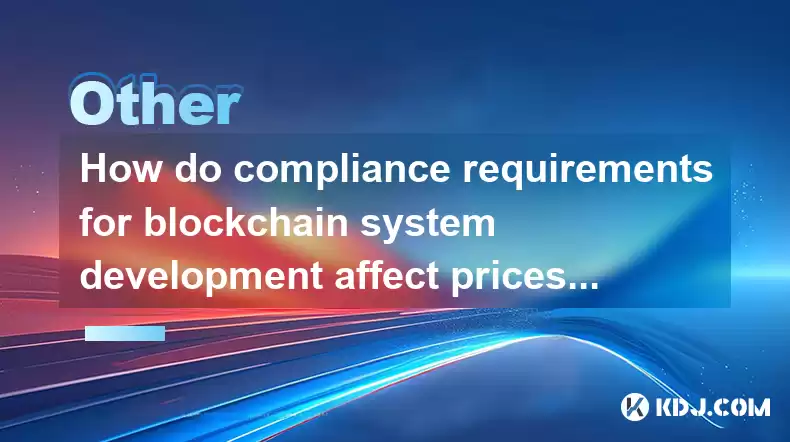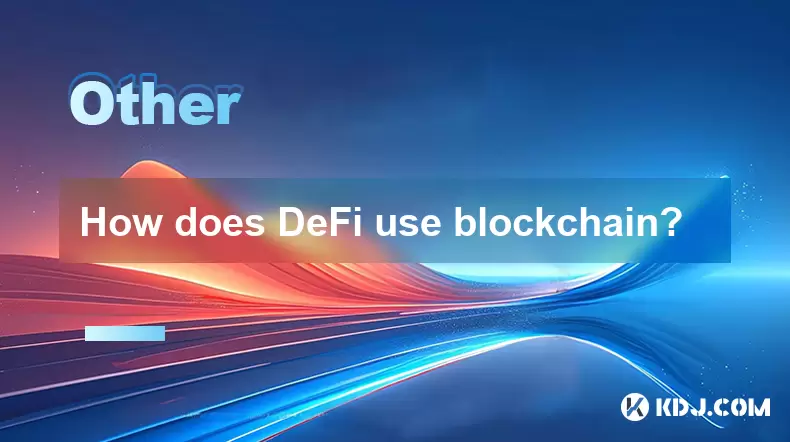-
 Bitcoin
Bitcoin $114400
1.32% -
 Ethereum
Ethereum $3499
2.20% -
 XRP
XRP $2.922
4.26% -
 Tether USDt
Tether USDt $0.0000
0.03% -
 BNB
BNB $752.6
1.53% -
 Solana
Solana $161.8
1.64% -
 USDC
USDC $0.9999
0.01% -
 TRON
TRON $0.3267
1.32% -
 Dogecoin
Dogecoin $0.1991
3.02% -
 Cardano
Cardano $0.7251
3.29% -
 Hyperliquid
Hyperliquid $38.32
3.36% -
 Stellar
Stellar $0.3972
7.58% -
 Sui
Sui $3.437
2.74% -
 Chainlink
Chainlink $16.29
3.65% -
 Bitcoin Cash
Bitcoin Cash $545.3
3.70% -
 Hedera
Hedera $0.2482
7.49% -
 Ethena USDe
Ethena USDe $1.001
0.03% -
 Avalanche
Avalanche $21.40
2.02% -
 Toncoin
Toncoin $3.579
1.56% -
 Litecoin
Litecoin $109.3
2.20% -
 UNUS SED LEO
UNUS SED LEO $8.951
-0.18% -
 Shiba Inu
Shiba Inu $0.00001220
2.75% -
 Polkadot
Polkadot $3.613
2.99% -
 Uniswap
Uniswap $9.173
3.78% -
 Monero
Monero $302.6
2.62% -
 Dai
Dai $0.0000
0.00% -
 Bitget Token
Bitget Token $4.320
1.52% -
 Pepe
Pepe $0.00001048
3.40% -
 Cronos
Cronos $0.1314
4.33% -
 Aave
Aave $259.4
3.54%
How do compliance requirements for blockchain system development affect prices?
Compliance requirements significantly increase blockchain development costs due to the need for specialized expertise, data protection measures, and regulatory adherence.
Apr 15, 2025 at 03:56 am

Compliance requirements for blockchain system development play a crucial role in shaping the overall costs associated with these projects. Compliance refers to the adherence to laws, regulations, and standards that govern the development and operation of blockchain systems. These requirements can significantly influence the pricing of blockchain projects, as they necessitate additional resources, time, and expertise to ensure that the system meets all necessary standards.
The Impact of Regulatory Compliance on Development Costs
One of the primary ways compliance requirements affect blockchain system development prices is through the need for specialized legal and compliance expertise. Hiring compliance experts is essential to navigate the complex regulatory landscape that surrounds blockchain technology. These professionals are responsible for ensuring that the blockchain system adheres to relevant laws and regulations, which can vary widely depending on the jurisdiction and the specific use case of the blockchain.
The costs associated with hiring compliance experts can be substantial. These professionals often command high salaries due to their specialized knowledge and the critical role they play in ensuring regulatory compliance. Additionally, the need for ongoing consultation and advice throughout the development process can further increase costs. Regular audits and compliance checks are also necessary to maintain adherence to regulatory standards, which adds to the overall expense of the project.
The Role of Data Protection and Privacy Regulations
Another significant factor in the cost of blockchain system development is the need to comply with data protection and privacy regulations. Regulations such as GDPR (General Data Protection Regulation) in the European Union impose strict requirements on how personal data is collected, stored, and processed. Blockchain systems that handle personal data must implement robust measures to ensure compliance with these regulations, which can be both complex and costly.
To meet data protection and privacy requirements, blockchain developers may need to implement additional security measures, such as encryption and anonymization techniques. These measures not only increase the technical complexity of the project but also require additional resources and expertise. Compliance with data protection regulations can thus lead to higher development costs, as developers must invest in the necessary tools and personnel to ensure that the blockchain system meets all applicable standards.
The Influence of Anti-Money Laundering (AML) and Know Your Customer (KYC) Regulations
Blockchain systems that facilitate financial transactions are subject to AML and KYC regulations, which are designed to prevent money laundering and terrorist financing. Compliance with these regulations requires the implementation of robust identity verification processes and transaction monitoring systems. These systems must be integrated into the blockchain platform, adding to the overall cost of development.
The development of AML and KYC-compliant systems involves significant technical and operational challenges. Developers must design and implement systems that can effectively verify the identities of users and monitor transactions for suspicious activities. This often requires the use of sophisticated software and hardware, as well as ongoing maintenance and updates to ensure compliance with evolving regulatory standards. The costs associated with AML and KYC compliance can therefore have a substantial impact on the pricing of blockchain system development.
The Need for Interoperability and Standardization
Compliance requirements also influence the cost of blockchain system development through the need for interoperability and standardization. Many regulatory bodies are working to establish standards for blockchain technology, which aim to ensure consistency and compatibility across different systems. Compliance with these standards requires developers to design their systems in accordance with established protocols, which can add complexity and cost to the development process.
Interoperability is particularly important for blockchain systems that need to interact with other systems or networks. Ensuring that a blockchain system can seamlessly integrate with existing infrastructure and comply with relevant standards requires careful planning and additional resources. The development of interoperable and standardized blockchain systems can therefore contribute to higher development costs, as developers must invest in the necessary tools and expertise to achieve compliance.
The Impact of Compliance on Project Timelines
Compliance requirements can also affect the pricing of blockchain system development by influencing project timelines. Meeting compliance standards often requires additional time for planning, development, and testing. This can lead to longer project timelines, which in turn can increase costs due to extended resource utilization and potential delays in project completion.
The need for thorough compliance checks and audits throughout the development process can further extend project timelines. Developers must allocate time and resources to ensure that the blockchain system meets all regulatory requirements before it can be deployed. The impact of compliance on project timelines can therefore have a significant effect on the overall cost of blockchain system development, as delays and extended timelines can lead to increased expenses.
Frequently Asked Questions
Q: How can blockchain developers minimize the impact of compliance requirements on development costs?
A: Blockchain developers can minimize the impact of compliance requirements on development costs by investing in thorough planning and research at the outset of the project. By understanding the specific compliance requirements that apply to their project, developers can design their systems to meet these standards from the beginning, reducing the need for costly revisions later in the development process. Additionally, leveraging existing compliance tools and platforms can help streamline the process and reduce costs.
Q: Are there any specific compliance requirements that are particularly challenging for blockchain system development?
A: Yes, some compliance requirements can be particularly challenging for blockchain system development. For example, ensuring compliance with GDPR can be difficult due to the decentralized nature of blockchain technology and the challenges associated with managing personal data. Similarly, implementing robust AML and KYC processes can be complex, as these systems must be integrated into the blockchain platform and require ongoing monitoring and updates.
Q: How do compliance requirements vary across different jurisdictions, and how does this affect blockchain system development costs?
A: Compliance requirements can vary significantly across different jurisdictions, which can have a direct impact on the costs of blockchain system development. For example, some countries may have more stringent regulations around data protection and privacy, while others may have specific requirements for financial transactions and AML/KYC compliance. Developers must be aware of these variations and design their systems to meet the most stringent standards, which can increase the complexity and cost of the project.
Q: Can compliance requirements change over time, and how does this affect the ongoing costs of maintaining a blockchain system?
A: Yes, compliance requirements can change over time as regulatory bodies update and refine their standards. This can affect the ongoing costs of maintaining a blockchain system, as developers may need to implement updates and modifications to ensure continued compliance. Regular audits and compliance checks are necessary to monitor these changes and ensure that the system remains in compliance, which can add to the ongoing expenses of maintaining the blockchain system.
Disclaimer:info@kdj.com
The information provided is not trading advice. kdj.com does not assume any responsibility for any investments made based on the information provided in this article. Cryptocurrencies are highly volatile and it is highly recommended that you invest with caution after thorough research!
If you believe that the content used on this website infringes your copyright, please contact us immediately (info@kdj.com) and we will delete it promptly.
- Bitcoin Price Wobbles: Options Analysis Points to Bullish Undercurrent Despite Dip
- 2025-08-04 04:30:12
- Ark Invest, Coinbase, and Bitcoin: Decoding the Crypto Investment Landscape in NYC
- 2025-08-04 04:30:12
- Ruvi AI: CoinMarketCap Listing and Audited Token Status Spark Investor Frenzy
- 2025-08-04 05:30:12
- BlockDAG, Cryptos 2025, and Live Exchange: What's Hot and What's Not
- 2025-08-04 05:50:11
- BlockDAG, TON, and Dogecoin: Riding the Crypto Wave with Innovation and Hype
- 2025-08-04 05:35:12
- LILPEPE, Cardano, and Shiba Inu: The 2025 Crypto Landscape
- 2025-08-04 04:50:12
Related knowledge

What is the difference between on-chain and off-chain transactions?
Aug 02,2025 at 04:22pm
Understanding On-Chain TransactionsOn-chain transactions refer to digital asset transfers that are recorded directly on a blockchain ledger. These tra...

What is a node's role in a blockchain network?
Aug 03,2025 at 03:16pm
Understanding the Function of a Node in a Blockchain NetworkA node is a fundamental component of any blockchain network, acting as a participant that ...

How are transactions verified on a blockchain?
Aug 04,2025 at 12:35am
Understanding the Role of Nodes in Transaction VerificationIn a blockchain network, nodes are fundamental components responsible for maintaining the i...

What is the double-spending problem and how does blockchain prevent it?
Aug 02,2025 at 01:07pm
Understanding the Double-Spending ProblemThe double-spending problem is a fundamental challenge in digital currency systems where the same digital tok...

What is the difference between a blockchain and a database?
Aug 01,2025 at 09:36pm
Understanding the Core Structure of a BlockchainA blockchain is a decentralized digital ledger that records data in a series of immutable blocks linke...

How does DeFi use blockchain?
Aug 03,2025 at 11:15pm
Understanding the Role of Blockchain in DeFiDecentralized Finance (DeFi) relies fundamentally on blockchain technology to operate without intermediari...

What is the difference between on-chain and off-chain transactions?
Aug 02,2025 at 04:22pm
Understanding On-Chain TransactionsOn-chain transactions refer to digital asset transfers that are recorded directly on a blockchain ledger. These tra...

What is a node's role in a blockchain network?
Aug 03,2025 at 03:16pm
Understanding the Function of a Node in a Blockchain NetworkA node is a fundamental component of any blockchain network, acting as a participant that ...

How are transactions verified on a blockchain?
Aug 04,2025 at 12:35am
Understanding the Role of Nodes in Transaction VerificationIn a blockchain network, nodes are fundamental components responsible for maintaining the i...

What is the double-spending problem and how does blockchain prevent it?
Aug 02,2025 at 01:07pm
Understanding the Double-Spending ProblemThe double-spending problem is a fundamental challenge in digital currency systems where the same digital tok...

What is the difference between a blockchain and a database?
Aug 01,2025 at 09:36pm
Understanding the Core Structure of a BlockchainA blockchain is a decentralized digital ledger that records data in a series of immutable blocks linke...

How does DeFi use blockchain?
Aug 03,2025 at 11:15pm
Understanding the Role of Blockchain in DeFiDecentralized Finance (DeFi) relies fundamentally on blockchain technology to operate without intermediari...
See all articles

























































































